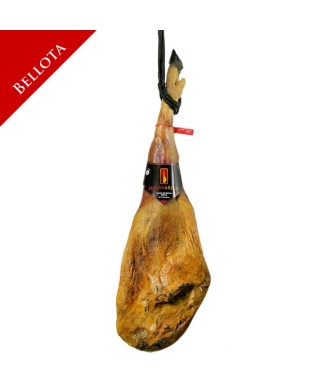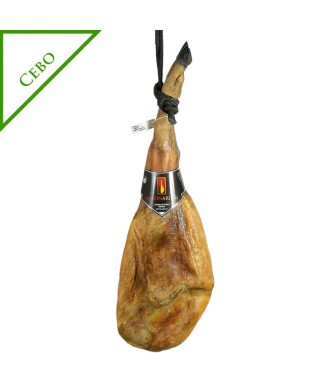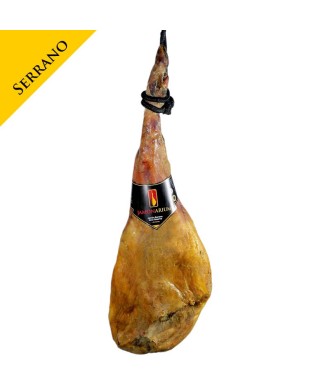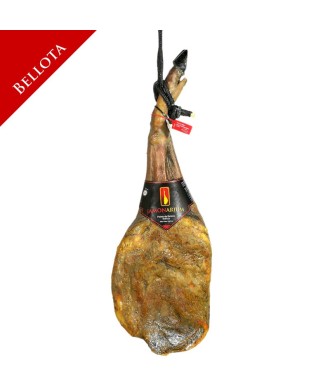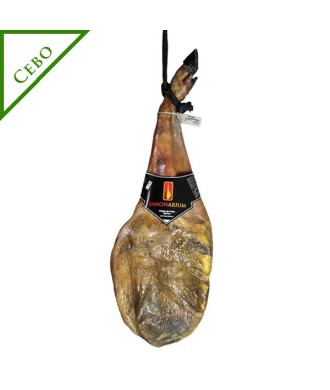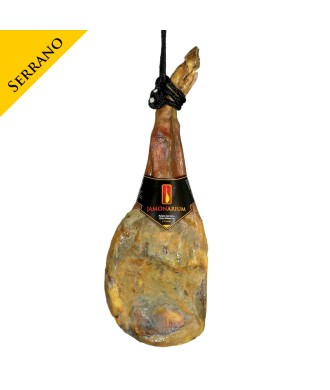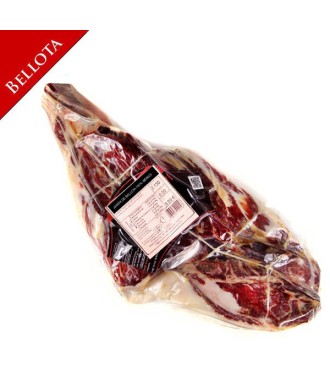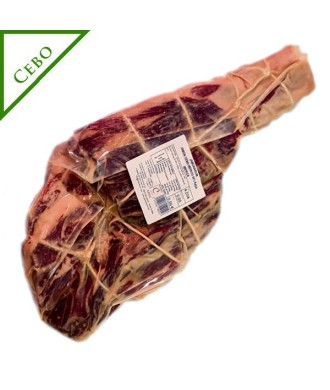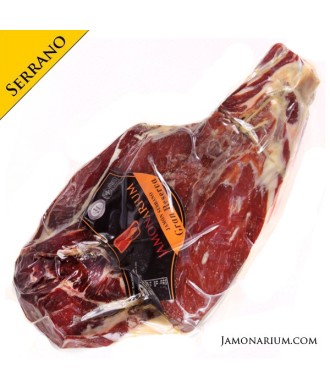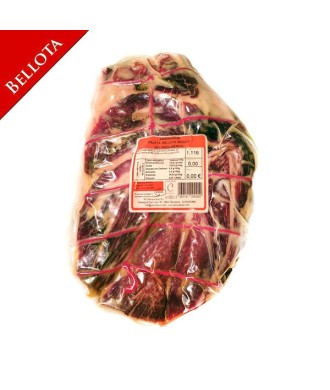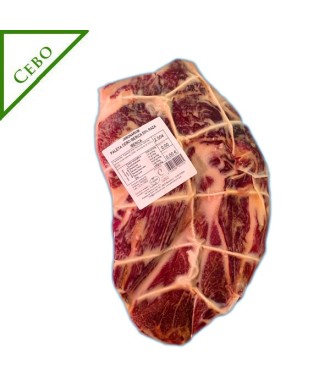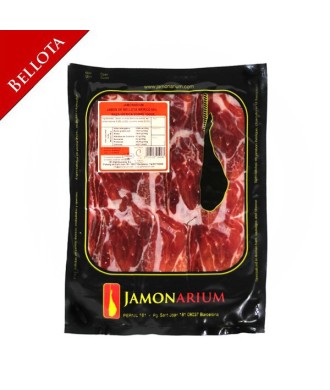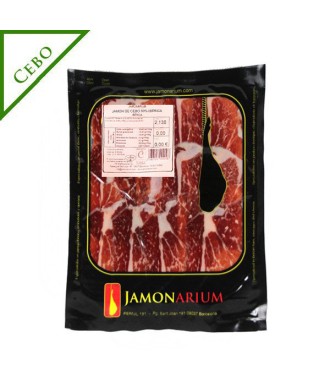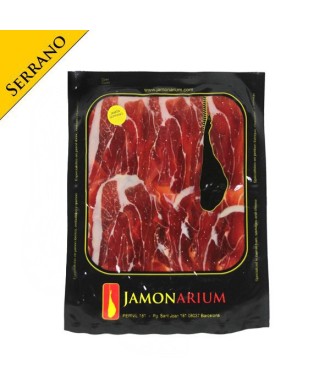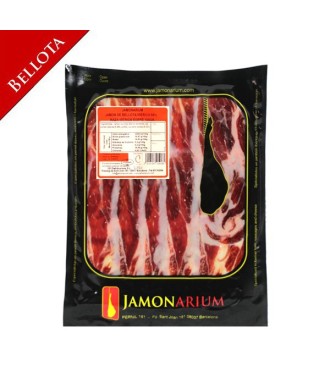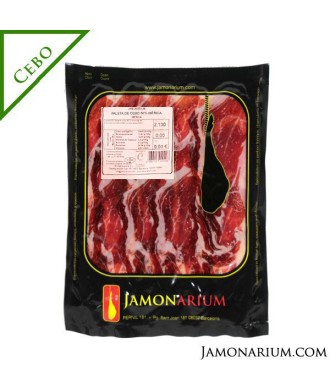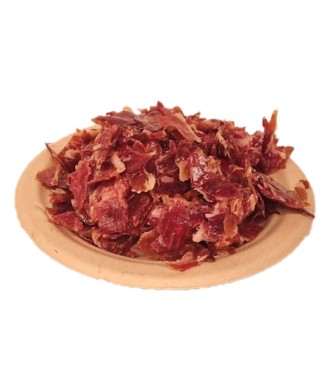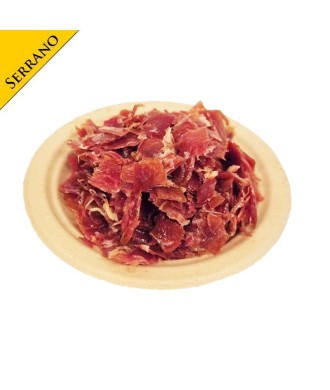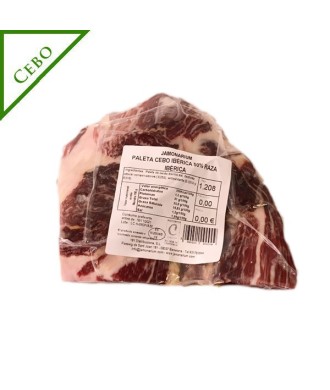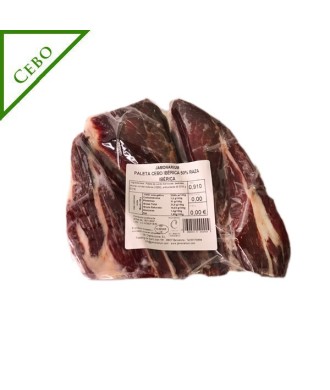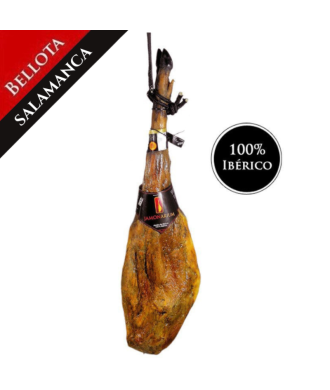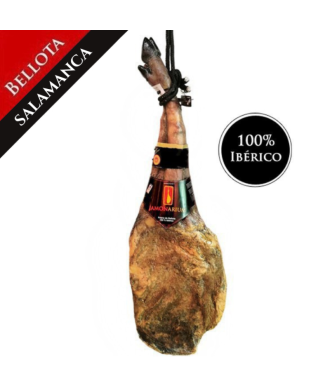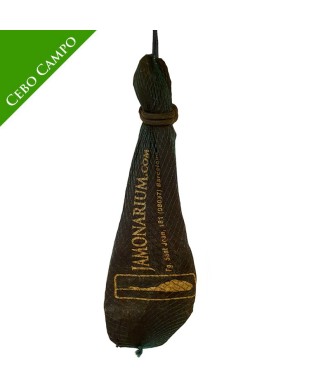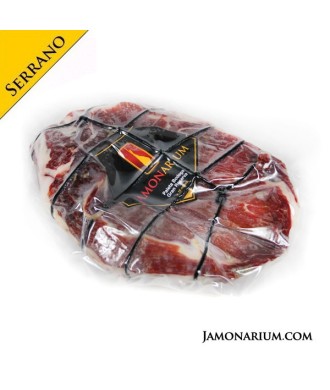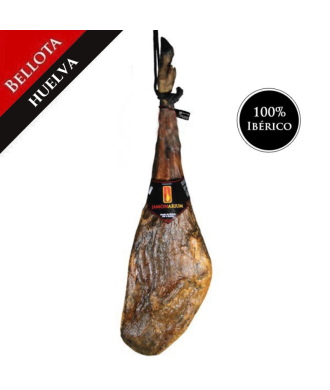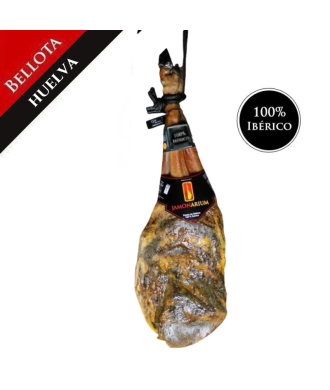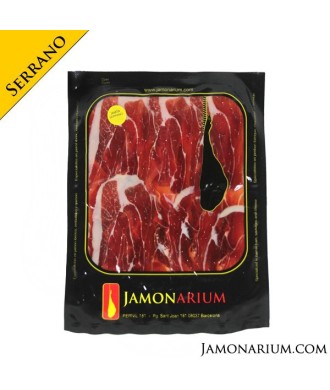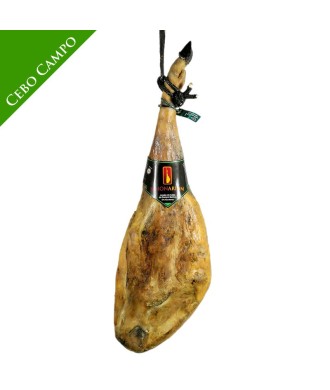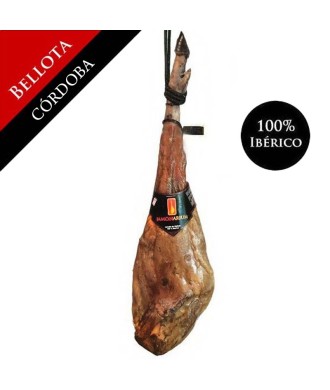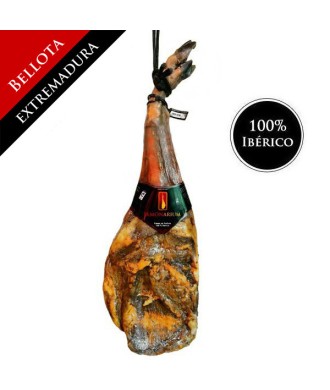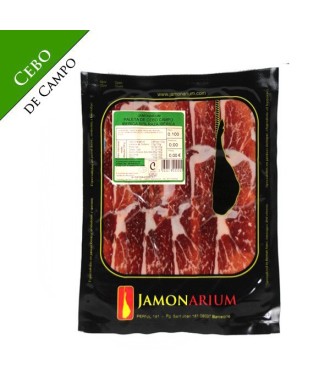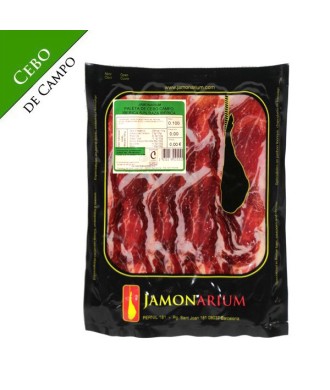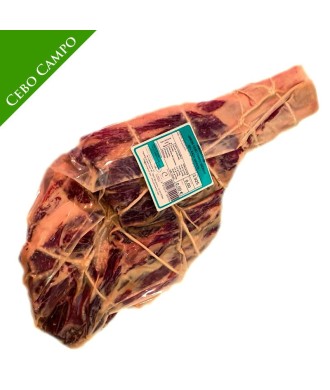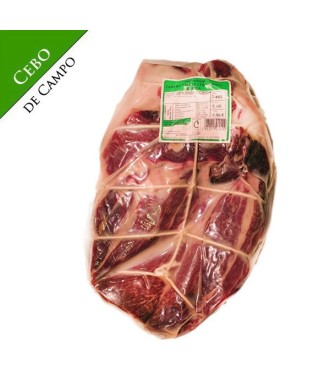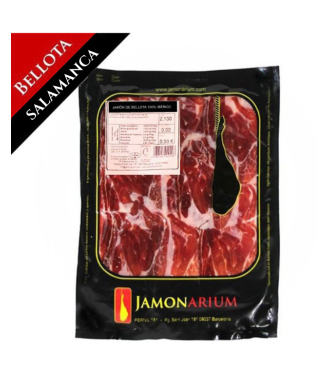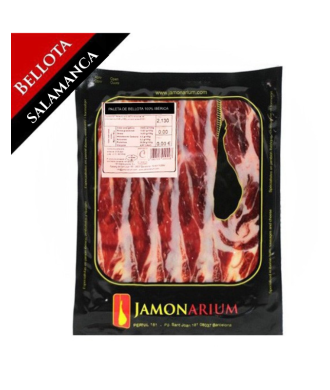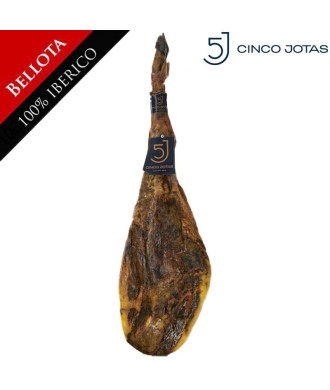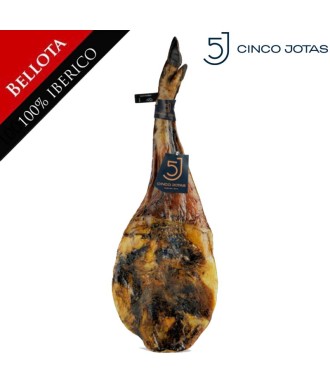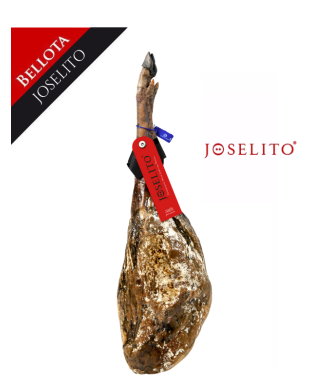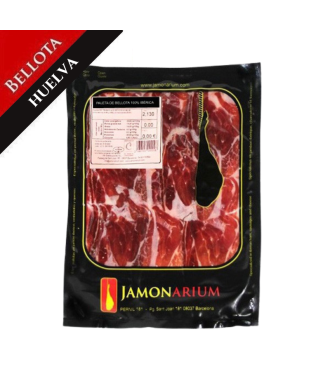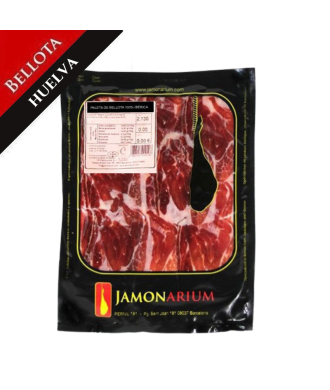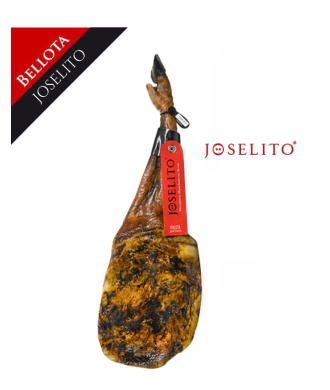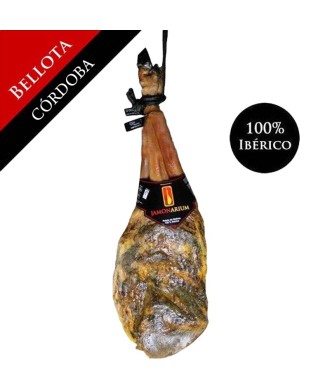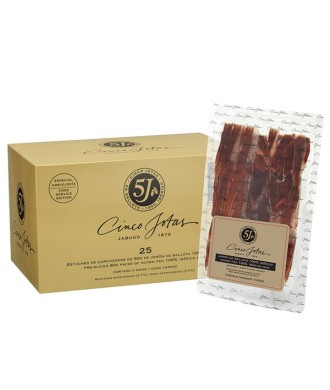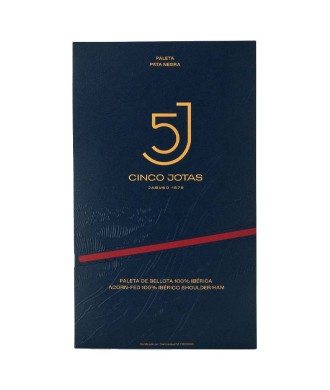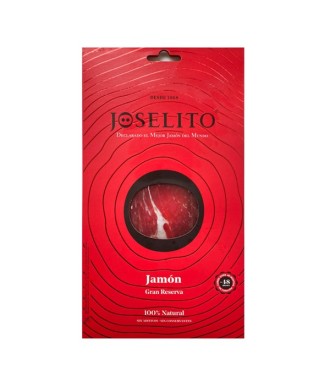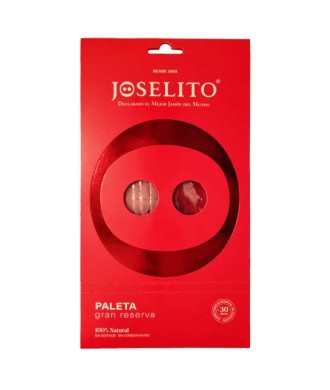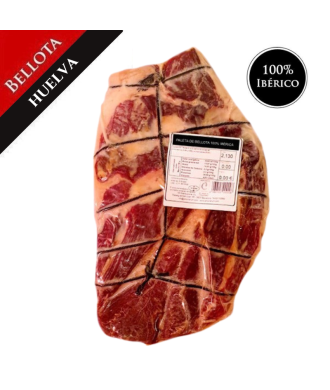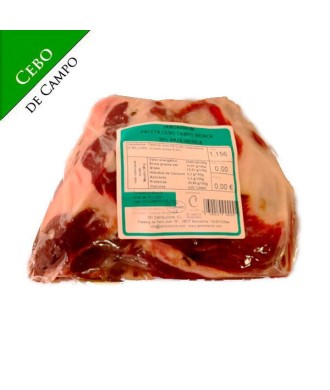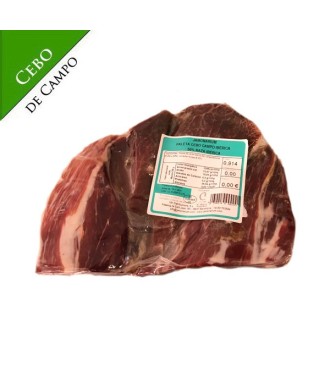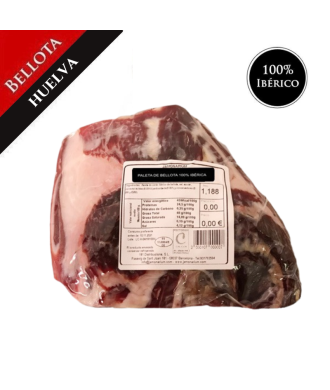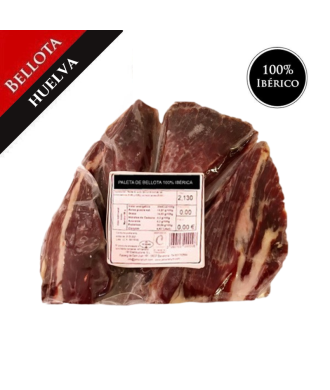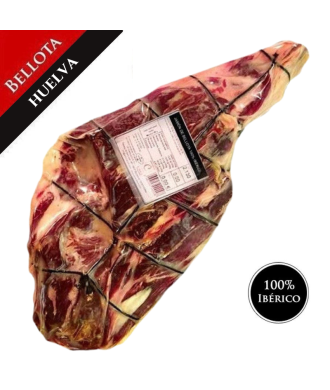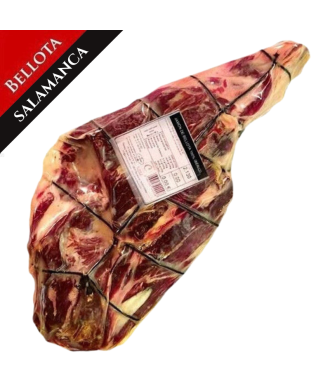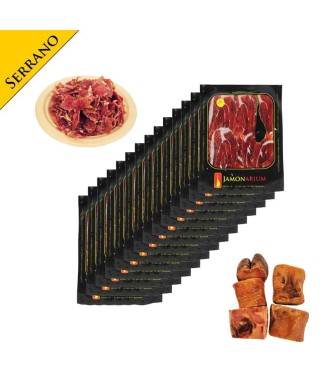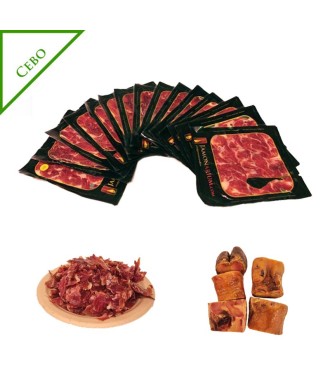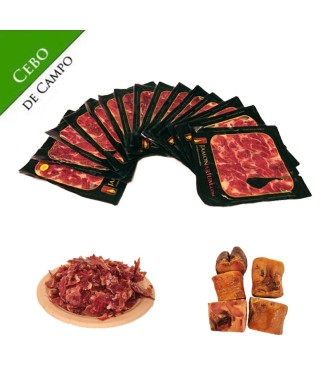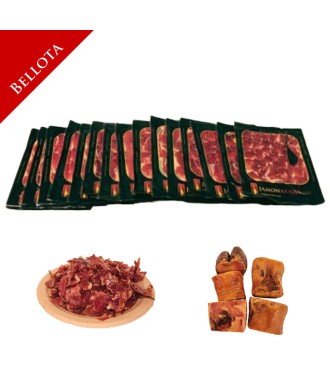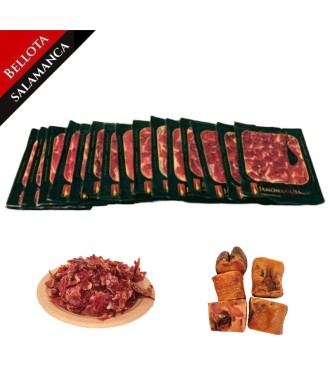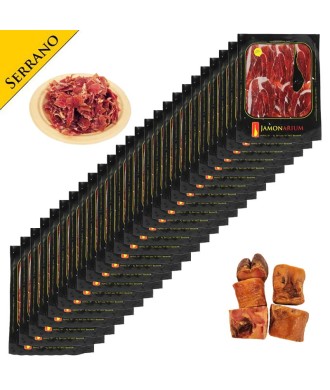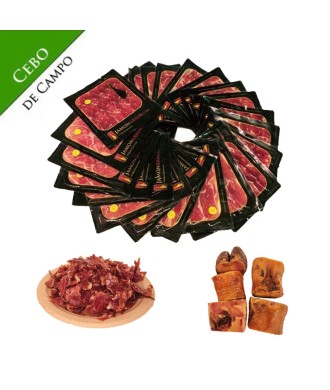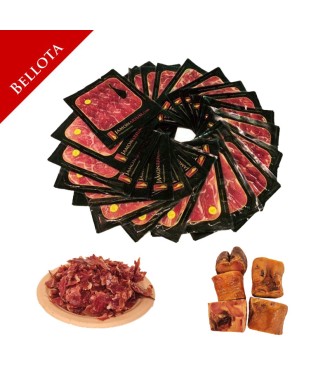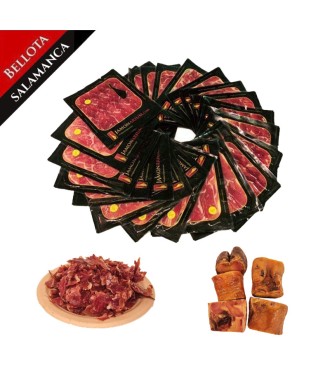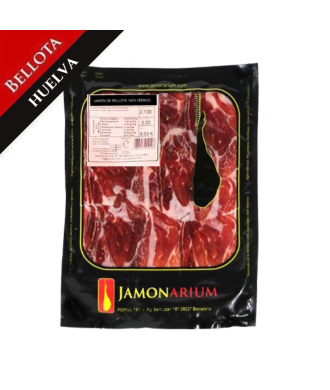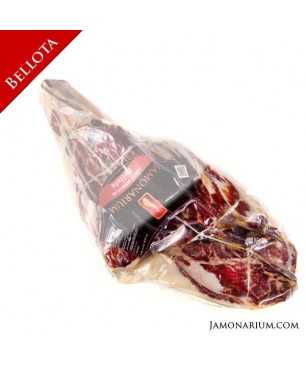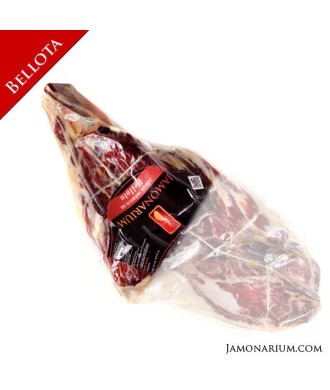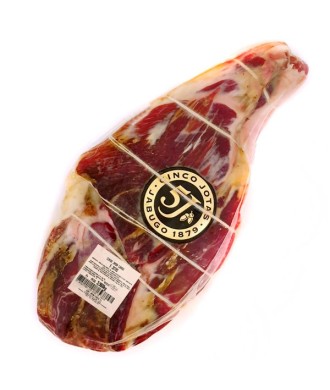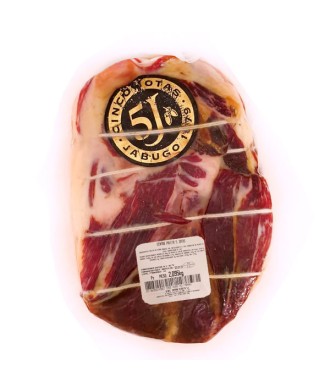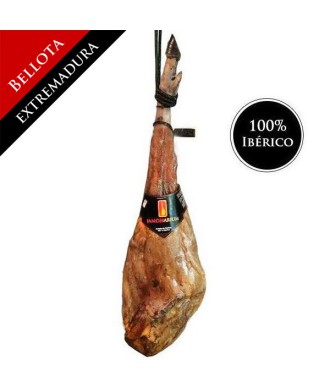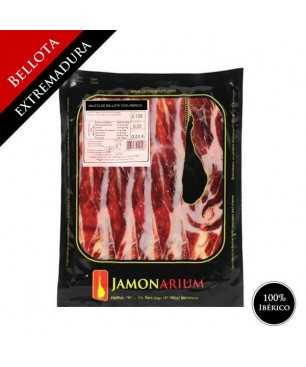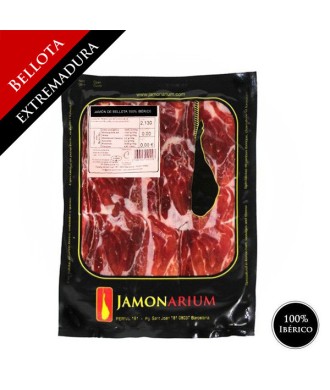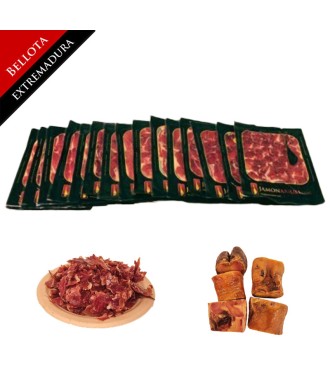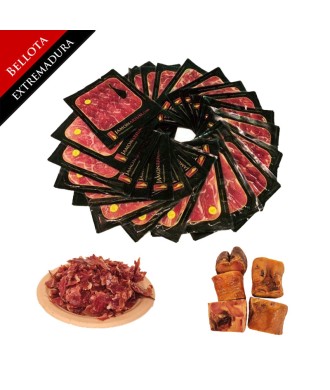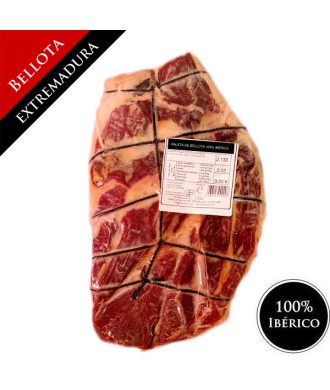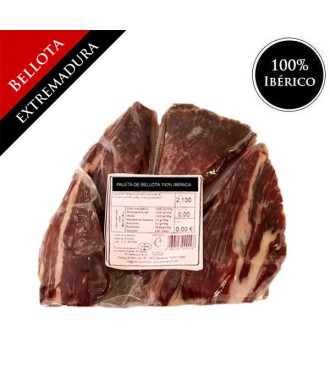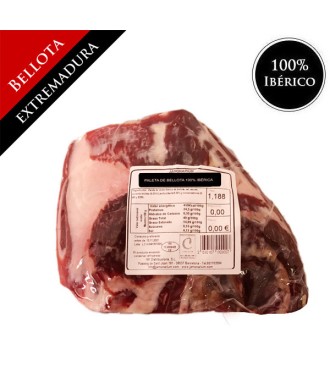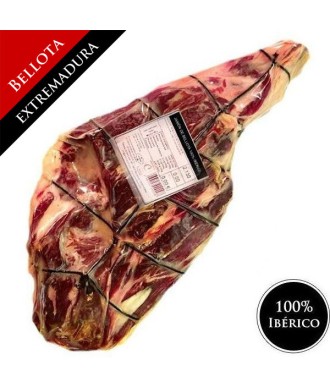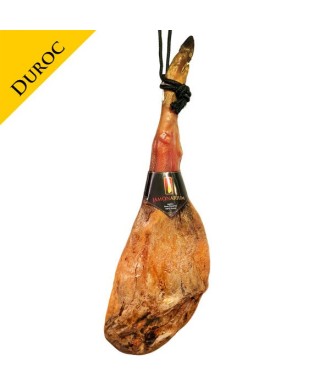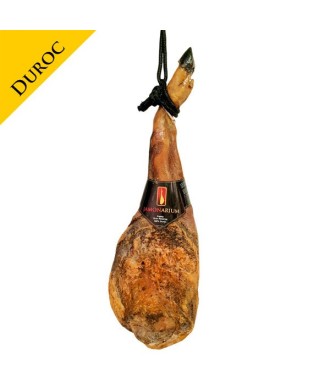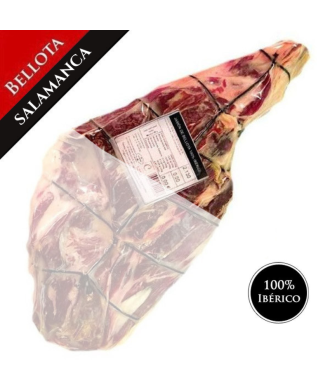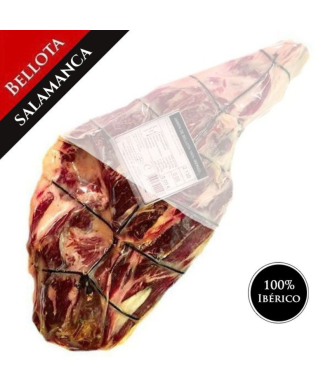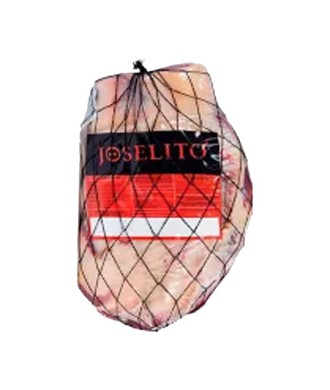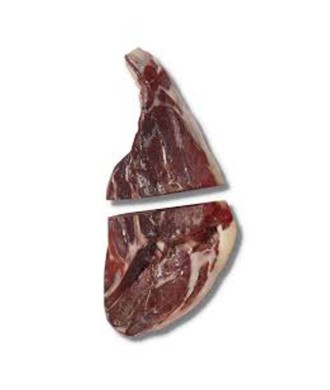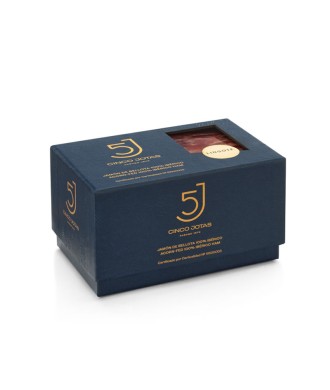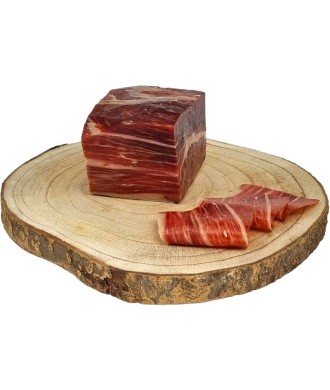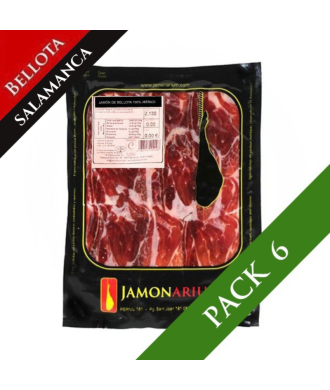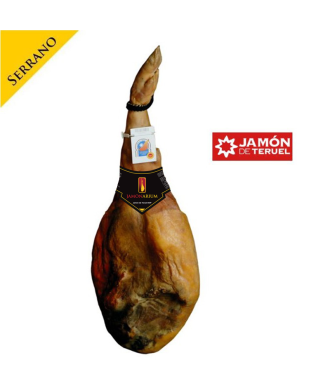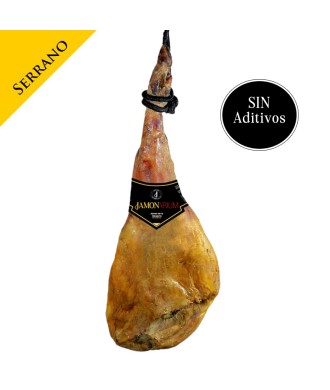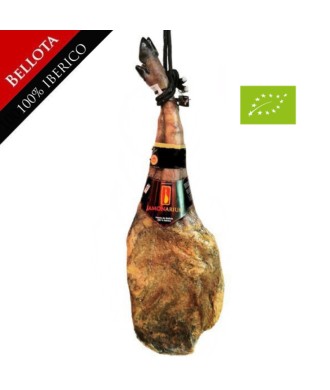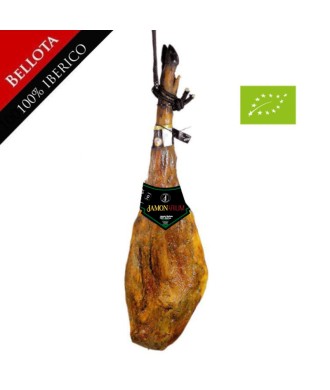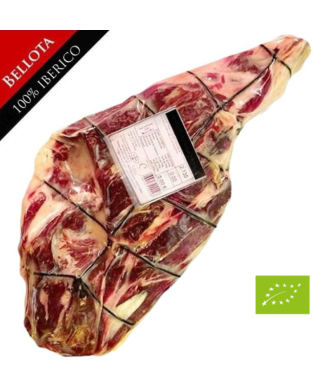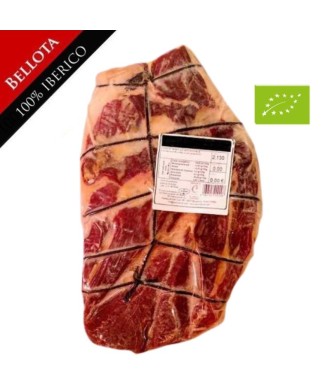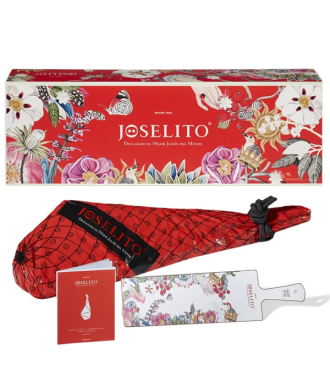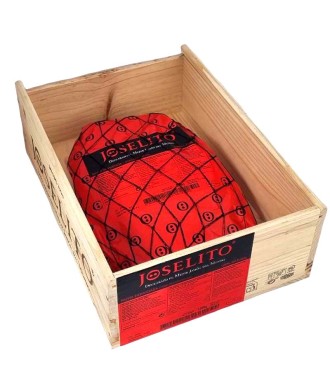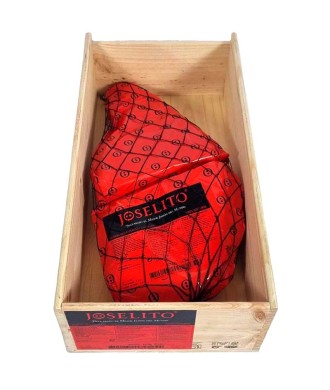This website uses its own and third-party cookies to improve our services and show you advertising related to your preferences by analyzing your browsing habits. To give your consent to its use, press the Accept button.
Cookie preferences
| Cookie | Provider | Purpose | Expiry |
|---|---|---|---|
| PHP_SESSID | www.jamonarium.com | The PHPSESSID cookie is native to PHP and allows websites to store serialised status data. On the website it is used to establish a user session and to pass state data through a temporary cookie, which is commonly known as a session cookie. These Cookies will only remain on your computer until you close your browser. | Session |
| PrestaShop-# | www.jamonarium.com | This is a cookie used by Prestashop to store information and keep the user's session open. It stores information such as currency, language, customer ID, among other data necessary for the proper functioning of the shop. | 480 hours |
| rc::a | It is used to read and filter bot requests. | Persistent | |
| rc::c | It is used to read and filter bot requests. | Persistent |
| Cookie | Provider | Purpose | Expiry |
|---|---|---|---|
| ads/ga-audiences | These cookies are used by Google AdWords to re-engage visitors that are likely to convert to customers based on the visitor’s online behaviour across websites. | Session |
| Cookie | Provider | Purpose | Expiry |
|---|---|---|---|
| _ga | Registers a unique ID that is used to generate statistical data on how the visitor uses the website. | 2 years | |
| _gat | Used by Google Analytics to throttle request rate | 1 day | |
| _gat_gtag_UA_# | Used to throttle request rate. | 1 minute | |
| _gd# | This is a Google Analytics Session cookie used to generate statistical data on how you use the website which is removed when you quit your browser. | Session | |
| _gid | Registers a unique ID that is used to generate statistical data on how the visitor uses the website. | 1 day |
Excellent 
-
Ham
- Whole with bone
-
Boneless
- Cut in slices
- Whole sliced
- Ham types
-
Bellota Ibérico 100% Pata Negra Ham
-
Jabugo (Huelva) Ham
- Salamanca Hams
- Extremadura Hams
- Los Pedroches
- .Jamón ecológico
- Bellota Ibérico 50% Ham
- Cebo de Campo ibérico Ham
- Cebo ibérico Ham
- Serrano Gran Reserva Ham
- Jamones Joselito
- Sausages
- Whole Dry-cured Sausage
- Sliced Dry-cured Sausage
- Iberico sausages
- León Sausages
-
Types of sausages
- Cheeses
- Whole cheese
- Cheese in portion
- Sheep Cheese
- Cow Cheeses
- Goat Cheeses
- Dry Cured Cheeses
- Semi Cured Cheeses
- Cheese Packs
-
Cheese Brands
- DO Idiazabal
- Sant Gil Albió
- Mas El Garet
- Viriato
- Zanetti
- Dorrea
- Beiardi
- Rosario Castaño
- Other cheese brands
- Gourmet
- Foie Gras & Pâtés
- Seafood
-
Spanish Canned Fish
- Tradicional Dishes
- Olives & Appetizers
- Pulses & Vegetables
- Deserts
- Packs with Gourmet Products
- Gourmet Cans in BOXES
- Gourmet - Brands
- Ramón Peña
- Mas Parés
- Agromar & Arbeyal
- Imperia
- Dardo
- Ortiz
- Paco Lafuente
- Yurrita
- Marzo
- Casa Riera Ordeix
- Frinsa
- Ribeira
- Herpac
- Greco Foie Gras
- La Luna
- Los Peperetes
- Bodega Coruña del Conde
- Pago de los Capellanes
- Oil
- Arbequina
- Picual
- Cornicabra
- Manzanilla
- Vinegar and dressings
- Hojiblanca
- Coupage
- Organic
- Olive oil in BOX
- Olive oil in Cans
- Large Format Olive Oil
- Premium Olive Oil
- Olive Oils with Awards
- Olive Oil Packs
-
The best oil mills
- Wines
- Spanish red wine
- White wine
- Canned Wines
- Vinos Rosados
- Sparkling wine (Cava)
- Organic wines
- Natural wine
- Classic wines
- Sangría
- Vermouth
- Whisky
- Wine packs
-
Wine BY BOX
- Price
- Origine
- D.O. Rioja
-
D.O. Ribera del Duero
- D.O. Priorat
- D.O. Somontano
- D.O. Empordà
- D.O. Rias Baixas
- D.O. Bierzo
- D.O. Montsant
- D.O. Rueda
- D.O. Penedés
- D.O. Terra Alta
- D.O. La Mancha
- D.O. Cava
- Other D.O.
- Accessories
SearchSay something...
Nothing found. Please repeat.
Unsupported browser. Sorry...
WishListCart 0There are no more items in your cart
Blog navigationHam louses, what are they and how can you avoid them?
Ham louses are mites and they are almost everywhere. The problem with them is that, in excess and if we do not detect them in time, they can spoil our Iberian ham.
They usually appear during the ripening stage in dryers and warehouses. It is at this time of healing, when the conditions of humidity and temperature are perfect to proliferate. That is why it is more than convenient to maintain a good temperature and humidity control in the place where the hams are cured, carrying out a good ventilation. It is also more than advisable to spread the pieces with butter because this prevents them from drying out in excess and avoid the appearance of mould or mites.
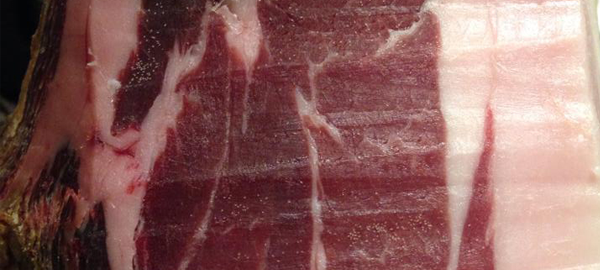
And how do I know if my ham has mites?
It's a bit unpleasant but anything that moves in your Iberian ham shouldn't be there. Normally, the mites have a whitish color, although they can also acquire a brown tone, everything will depend on the diet.
If it turns out that your ham has mites, the first thing we recommend is to check what is affected. If you have started the piece and it has a rotten smell, probably one of the causes is that the mites have been moving towards the inside of the ham. In this case, return it. The company may not be aware of the infection and by informing them, they will be preventing them from economic losses and major health problems.
If your piece of ham is already started and only a small part has been affected you can carefully clean that part and treat it later.
The most advisable is to melt fat and cover the piece with the resulting liquid. In this way, you do not alter the organoleptic properties of ham and, in addition, you will penetrate all the recesses. And when the liquid fat solidifies, it will suffocate the possible mites that remain in our piece of ham.
The other way to deal with the problem is using sunflower oil, but it is less recommended because the flavor and smell of the ham may vary, as well as not being totally effective. (Olive oil is discarded because of its taste and smell even stronger).
- What you should not do is washing the ham with warm water, since you would be adding moisture to the ham, and in addition this action will not guarantee to eliminate the infection.
- Do not freeze the piece either. Mites can survive extreme temperatures and the refrigerator is not powerful enough to exterminate them, in addition to that you would end up altering its texture and flavor.
- Do not use chemical products. It is not even allowed at the industrial level, where there are qualified staff and have the necessary facilities.
If your ham is intact, congratulations! It is the most common, even so, it would not hurt you to take certain precautions to avoid these unfortunate bugs. Maintain optimal hygienic conditions of all the tools for slicing the ham. Take off the cotton bag and the cord to hang it. Place it in a cool and dry place, away from sources of heat or humidity. And finally, if you are going to place it in a ham holder, cover it with a layer of butter or fat.
We hope that your only concern is if you accompany your Iberian ham with a good wine or a cool beer.
Posted in: HamRelated products
Ibérico Bellota Ham, 50% Iberian Breed
Price: €422.09This Bellota Ibérico Ham, 50% Iberian Breed has been made in the area of...Ibérico Cebo Ham, 50% Iberian Breed
Price: €208.48This Cebo Iberico Ham, 50% Iberian Breed has been made in the area of...Gran Reserva Seleccion Ham, +20 months (whole)
Price: €156.32This Gran Reserva Seleccion Ham and has more than 20 months of curying...Ibérico Bellota Shoulder, 50% Iberian Breed
Price: €149.50This Bellota Ibérico Shoulder, 50% Iberian Breed has been made in the area...Ibérico Cebo Shoulder, 50% Iberian Breed
Price: €94.05This Cebo Ibérico Shoulder Ham, 50% Iberian Breed has been made in the area...Gran Reserva Seleccion Shoulder, +15 months (whole)
Price: €74.25This Gran Reserva Seleccion Shoulder (whole) and has more than 15 months of...Ibérico Bellota ham, 50% iberian breed - BONELESS
Price: €385.44Our Iberian Ham Bellota is one of our best-sellers and one of our...Ibérico Cebo Ham, 50% Iberian Breed - BONELESS
Price: €169.96The boneless Iberian Cebo ham is the best option to enjoy at home the best...Gran Reserva Seleccion Ham, +20 months - BONELESS
Price: €162.54The boneless Gran Reserva Selection ham is the best option to enjoy at home...Ibérico Bellota Shoulder, 50% Iberian breed - BONELESS
Price: €167.28The boneless Bellota Iberian shoulder ham is the best option to enjoy at...Ibérico Cebo Shoulder, 50% Iberian Breed - BONELESS
Price: €92.72The boneless Iberian Cebo shoulder is the best option to enjoy at home the...Bellota Iberico Ham, 50% Iberian breed sliced 100g
Price: €14.90Our Iberian Ham Bellota 50% Iberian breed is one of our best-sellers and one...Cebo Iberico Ham, 50% Iberian Breed sliced 100g
Price: €8.50The sliced Iberian ham (cebo) is presented in thin slices and vacuum-packed...Gran Reserva Selección Ham, +20 months ham sliced 100g
Price: €5.90The sliced Gran Reserva Selección ham is presented in thin slices and...Bellota Iberico Shoulder, 50% Iberian Breed sliced 100g
Price: €10.90Iberian Bellota shoulder ham sliced is the front leg of the iberian pig,...Cebo Iberico Shoulder, 50% Iberian Breed sliced 100g
Price: €7.90This Cebo Ibérico Shoulder Ham, 50% Iberian Breed has been made in the area...Iberico ham bits (150gr)
Price: €9.50The iberico bits are the remaining ham still on the bone when it is boned....Gran Reserva Selección shoulder bits 150g
Price: €7.50The ham bits of gran reserva selección shoulder are the remaining ham...Ibérico Cebo Shoulder, 50% Iberian Breed - BONELESS - Caña
Price: €53.70The Cebo Iberico Shoulder, 50% Iberian Breed boneless - Top half is the best...Ibérico Cebo Shoulder, 50% Iberian Breed - BONELESS - Punta
Price: €32.22The Cebo Iberico Shoulder, 50% Iberian Breed boneless - Bottom half is the...Ibérico Bellota Ham (Salamanca), 100% Iberian Breed - Pata Negra
Price: €487.48This Bellota Ibérico Ham (Salamanca), 100% Iberian Breed - Pata Negra has...Ibérico Bellota Shoulder (Salamanca), 100% Iberian Breed - Pata Negra
Price: €184.77This Bellota Ibérico Shoulder (Salamanca), 100% Iberian Breed - Pata Negra...Ibérico Cebo de Campo Shoulder, 50% Iberian Breed
Price: €116.37This Cebo de Campo Ibérico Shoulder Ham, 50% Iberian Breed has been made in...Serrano Reserva Seleccion Shoulder, +15 months - BONELESS
Price: €84.60The boneless Gran Reserva Selección shoulder is the best option to enjoy at...Ibérico Bellota Ham (Huelva), 100% iberian Breed - Pata negra
Price: €501.75This Ibérico de Bellota Ham (Huelva), 100% iberian Breed - Pata negra has...Ibérico Bellota Shoulder (Huelva), 100% Iberian Breed - Pata negra
Price: €199.03This Ibérico Bellota Shoulder (Huelva), 100% Iberian Breed - Pata negra has...Gran Reserva Seleccion Shoulder, +15 months sliced 100g
Price: €4.90The sliced Gran Reserva Selección shoulder is presented in thin slices and...Ibérico Cebo de Campo Ham, 50% Iberian Breed
Price: €216.30This Cebo de Campo Ibérico Ham, 50% Iberian Breed has been made in the area...Ibérico Bellota ham (Los Pedroches, Córdoba), 100% Iberian breed - Pata negra
Old price: €535.20 Price: €481.68 Discount: 10% Save up: -€53.52The Iberico Bellota Ham (Los Pedroches, Córdoba), 100% Pata Negra Iberian...Ibérico Bellota Shoulder (Extremadura), 100% Iberian Breed - Pata Negra
Price: €209.50This Bellota Ibérico Shoulder (Extremadura), 100% Iberian Breed - Pata Negra...Cebo de Campo Iberico Ham, 50% Iberian Breed sliced 100g
Price: €10.20The Iberian Spanish Cebo de Campo ham is the back leg of an Iberian pig...Cebo de Campo Ibérico Shoulder, 50% Iberian Breed sliced 100g
Price: €9.20The Iberian Cebo de Campo shoulder is the foreleg of an Iberian pig raised...Iberico Cebo de Campo Ham, 50% Iberian Breed - BONELESS
Price: €219.20The Ibérico Spanish ham (Cebo de Campo) is the back leg of an Iberian pig...Ibérico Cebo de Campo Shoulder, 50% iberian Breed - BONELESS
Price: €110.47The Iberian Cebo de Campo shoulder is the foreleg of an Iberian pig raised...Ibérico Bellota Ham (Salamanca), 100% iberian breed - Pata Negra sliced 100g
Price: €22.50The Bellota 100% Pure Iberian Ham ( Salamanca) "Pata Negra" sliced is a ham...Bellota Iberico Shoulder (Salamanca), 100% iberian breed - Pata Negra sliced 100g
Price: €16.50The Bellota 100% Ibérico "Pata Negra” Shoulder (Salamanca) is the product of...Cinco Jotas (5j) 100% Ibérico Bellota Jabugo ham
Price: €583.88The 100% Iberico Bellota Cinco Jotas (5j) Jabugo ham pata negra comes from...Cinco Jotas (5J) 100% ibérico Bellota Jabugo Shoulder
Price: €232.50This Cinco Jotas (5J) Bellota 100% iberico Jabugo Shoulder has been made in...Joselito Gran Reserva Ham
Price: €626.50Joselito Gran Reserva ham is considered the best ham in the world. Joselito...Bellota Iberico Ham (Huelva), 100% iberian breed - Pata Negra sliced 100g
Price: €24.50The Bellota 100% Pure Iberian Ham (Huelva) "Pata Negra" sliced is a ham of...Bellota Ibérico Shoulder (Huelva), 100% Iberian Breed - Pata Negra sliced 100g
Price: €17.50The Bellota 100% Ibérico "Pata Negra” Shoulder (Huelva) is the product of...Joselito Gran Reserva Shoulder
Price: €263.45Joselito Gran Reserva Shoulder is considered the best shoulder in the world....Ibérico Bellota Shoulder (Los Pedroches, Córdoba), 100% Iberian Breed - Pata Negra
Old price: €199.03 Price: €179.12 Discount: 10% Save up: -€19.90This Ibérico Bellota Shoulder (Los Pedroches, Córdoba), 100% Iberian Breed -...Cinco Jotas (5J) Jabugo Ham 100% Iberico bellota Pata Negra - PACK SLICED 25 bags
Price: €690.00The Cinco Jotas (5J) Jabugo Ham 100% ibérico bellota pata negra comes from...Iberico Bellota Cinco Jotas (5j) 100% Jabugo cut 80g
Price: €29.90The Iberico Bellota Cinco Jotas (5j) 100% Jabugo ham sliced by traditionally...Cinco Jotas (5J) Bellota 100% ibérico Jabugo Shoulder 80g
Price: €19.90This Cinco Jotas (5J) Bellota 100% ibérico Jabugo Shoulder sliced by...Joselito Gran Reserva Ham sliced 70g
Price: €23.90Joselito Gran Reserva ham is considered the best ham in the world. Joselito...Joselito Gran Reserva Shoulder sliced 70g
Price: €16.90Joselito Gran Reserva Shoulder is considered the best shoulder in the world....Ibérico Bellota Shoulder (Huelva), 100% Iberian Breed - "Pata negra" - BONELESS
Price: €180.39The Shoulder 100% Ibérico puro Bellota (Huelva) Pata Negra is a ham of the...PACK 12 - Bellota Ibérico ham, 100% Iberian (Huelva) - Pata negra sliced 100g
Old price: €294.00 Price: €279.30 Discount: 5% Save up: -€14.70PACK 12 - Bellota Iberico Shoulder, 100% iberico (Huelva) - Pata negra sliced 100g
Old price: €210.00 Price: €199.50 Discount: 5% Save up: -€10.50Ibérico Cebo de Campo Shoulder, 50% Iberian Breed - BONELESS - Caña
Price: €69.48The Cebo de Campo Iberico Shoulder, 50% iberian Breed boneless - Top half is...Ibérico Cebo de Campo Shoulder, 50% iberian Breed - BONELESS - Punta
Price: €49.22The Cebo de Campo Iberico Shoulder, 50% iberian Breed boneless - bottom half...Ibérico Bellota Shoulder (Huelva), 100% Iberian Breed - Pata negra - BONELESS - Caña
Price: €99.23The Shoulder 100% Iberico de Bellota (Huelva) "Pata negra" boneless - top...Ibérico Bellota Shoulder (Huelva), 100% Iberian Breed - Pata negra - BONELESS - Punta
Price: €61.43The Shoulder 100% Iberico de Bellota (Huelva) "Pata negra" boneless - bottom...Ibérico Bellota Ham (Huelva), 100% iberian Breed - Pata negra - BONELESS
Price: €455.40The Ham 100% Ibérico puro Bellota (Huelva) Pata Negra boneless is a ham of...Ibérico Bellota Ham (Salamanca), 100% Iberian Breed - Pata Negra - BONELESS
Price: €483.60The 100% pure ibérico Bellota ham from Salamanca pata negra boneless is a...Gran Reserva Seleccion Shoulder, +15 months - WHOLE sliced
Old price: €85.00 Price: €76.50 Discount: 10% Save up: -€8.50Whole Gran reserva Selección shoulder ham sliced. Comfortable and ideal...Cebo Iberico Shoulder, 50% Iberian Breed - WHOLE sliced
Old price: €132.00 Price: €118.80 Discount: 10% Save up: -€13.20Iberico de cebo shoulder whole sliced, boneless and cut into slices....Cebo de Campo Iberico Shoulder, 50% Iberian Breed - WHOLE Sliced
Old price: €151.50 Price: €136.35 Discount: 10% Save up: -€15.15The Iberian Cebo de Campo shoulder whole sliced is the foreleg of an Iberian...Bellota Iberico Shoulder, 50% Iberian Breed - WHOLE sliced
Old price: €177.00 Price: €159.30 Discount: 10% Save up: -€17.70Whole Bellota iberian shoulder ham whole sliced. Comfortable and ideal...Iberico Bellota Shoulder (Salamanca), 100% iberian breed - Pata Negra WHOLE sliced
Old price: €261.00 Price: €234.90 Discount: 10% Save up: -€26.10The Bellota 100% Ibérico "Pata Negra” Shoulder (Salamanca) is the product of...Gran Reserva Seleccion Ham, +20 months - WHOLE sliced
Old price: €159.00 Price: €143.10 Discount: 10% Save up: -€15.90Whole Gran reserva selection sliced ham. Comfortable and ideal format to...Cebo de Campo Iberico Ham, 50% Iberian Breed - WHOLE sliced
Old price: €268.50 Price: €241.65 Discount: 10% Save up: -€26.85The Iberian Spanish ham (Cebo de Campo) whole sliced is the back leg of an...Bellota Iberico Ham, 50% Iberian Breed - WHOLE sliced
Old price: €386.00 Price: €347.40 Discount: 10% Save up: -€38.60Whole sliced Spanish iberian Bellota ham is ship with the bone and cut into...Bellota Iberico Ham (Salamanca), 100% iberian breed - Pata Negra WHOLE sliced
Old price: €576.00 Price: €518.40 Discount: 10% Save up: -€57.60The Bellota 100% Pure Iberian Ham ( Salamanca) "Pata Negra" whole sliced is...Bellota Iberico Ham (Huelva), 100% Iberian Bellota - Pata Negra WHOLE sliced
Old price: €626.00 Price: €563.40 Discount: 10% Save up: -€62.60The Bellota 100% Pure Iberian Ham (Huelva) "Pata Negra" whole sliced is a...Ibérico Bellota Ham, 50% Iberian Breed - BONELESS - Punta
Price: €130.41Our Iberian Ham Bellota is one of our best-sellers and one of our...Ibérico Bellota Ham, 50% Iberian Breed - BONELESS - Caña
Price: €182.23Our Iberian Ham Bellota is one of our best-sellers and one of our...Cinco Jotas (5j) 100% Ibérico Bellota Jabugo ham - BONELESS
Price: €790.20The 100% Iberico Bellota Cinco Jotas (5j) Jabugo ham pata negra boneless...Cinco Jotas (5J) 100% ibérico Bellota Jabugo Shoulder - BONELESS
Price: €251.91This Cinco Jotas (5J) Bellota 100% iberico Jabugo Shoulder - BONELESS has...Ibérico de Bellota Ham (Extremadura), 100% iberian Breed - Pata negra
Price: €535.20This Ibérico de Bellota Ham (Extremadura), 100% iberian Breed - Pata negra...Bellota 100% pure Iberian Shoulder (Extremadura) - Pata Negra sliced 100g
Price: €17.50The Bellota (acorn) 100% pure Iberian shoulder Extremadura - Pata Negra...Bellota 100% pure Iberian Ham (Extremadura) - Pata Negra sliced 100g
Price: €23.90The Bellota (acorn) 100% pure Iberian Ham Extremadura - Pata Negra sliced...Bellota 100% pure Iberian Shoulder (Extremadura) - Pata Negra WHOLE sliced
Old price: €276.00 Price: €248.40 Discount: 10% Save up: -€27.60The Bellota (acorn) 100% pure Iberian shoulder Extremadura - Pata Negra is...Bellota 100% pure Iberian Ham (Extremadura) - Pata Negra WHOLE sliced
Old price: €611.00 Price: €549.90 Discount: 10% Save up: -€61.10The Bellota (acorn) 100% pure Iberian Ham Extremadura - Pata Negra is...Ibérico Bellota Shoulder (Extremadura), 100% Iberian Breed - Pata Negra - BONELESS
Price: €180.39The Bellota (acorn) 100% pure Iberian shoulder Extremadura - Pata Negra...Ibérico Bellota Shoulder (Extremadura), 100% Iberian Breed - Pata Negra - BONELESS - Punta
Price: €75.60The Bellota (acorn) 100% pure Iberian shoulder Extremadura - Pata Negra...Ibérico Bellota Shoulder (Extremadura), 100% Iberian Breed - Pata Negra - BONELESS - Caña
Price: €99.23The Bellota (acorn) 100% pure Iberian shoulder Extremadura - Pata Negra...Ibérico de Bellota Ham (Extremadura), 100% iberian Breed - Pata Negra - BONELESS
Price: €430.10The Bellota (acorn) 100% pure Iberian Ham Extremadura - Pata Negra BONELESS...Ham 100% Duroc Gran Reserva
Price: €174.82The 100% Duroc Gran Reserva Ham is a ham of the highest quality with a cure...Shoulder 100% Duroc Gran Reserva
Price: €81.37The 100% Duroc Gran Reserva Shoulder is a shoulder of the highest quality...Bellota Ibérico Ham (Salamanca), 100% Iberian Breed - Pata Negra - BONELESS - Caña
Price: €359.11The Bellota Ibérico Ham (Salamanca), 100% Iberian Breed - Pata Negra -...Ibérico Bellota Ham (Salamanca), 100% Iberian Breed - Pata Negra - BONELESS - Punta
Price: €226.10The Bellota Ibérico Ham (Salamanca), 100% Iberian Breed - Pata Negra -...Joselito Gran Reserva Shoulder - BONELESS
Price: €266.50Joselito Gran Reserva Shoulder - boneless is considered the best shoulder in...Joselito Gran Reserva Ham - BONELESS
Price: €942.50Joselito Gran Reserva ham - boneless is considered the best ham in the...PACK 10 - Jamón Gran Reserva Selección, +20 meses cortado 100g
Old price: €59.00 Price: €50.15 Discount: 15% Save up: -€8.85Gold Bar (Lingote) Cinco Jotas 450gr
Price: €150.90The Cinco Jotas (5j) ham Gold Bar is a 100% Iberian Bellota pata negra...Ritual of shoulder Cinco Jotas sliced (whole)
Price: €319.00This Cinco Jotas (5j) 100% Iberian Bellota Jabugo Shoulder whole sliced...Ritual of ham Cinco Jotas sliced (whole)
Price: €745.00This Cinco Jotas (5j) 100% Iberian Bellota Jabugo Ham whole sliced...Cinco Jotas (5j) Shoulder 100% Iberico Bellota Jabugo (Maletin) 5-6 kg, WHOLE
Price: €319.00Cinco Jotas (5j) Shoulder 100% Iberico Bellota Jabugo (Maletin) WHOLE 5-6 kg...The Heart of 100% Iberico Bellota Ham, pure Umami 600gr
Price: €125.00The Heart of 100% Iberico Bellota Ham is a block of ham made from 100%...PACK 12 - Bellota Iberico Ham, 50% Iberian breed sliced 100g
Price: €178.80PACK 12 - Cebo Iberico Ham, 50% Iberian Breed sliced 100g
Price: €102.00Teruel Ham (D.O.P Teruel) 22 months
Price: €175.50The Teruel Ham holds the distinctive Teruel Denomination of Origin. This...Alpujarra Ham without additives +20 months - Whole
Price: €158.40This Ham de la Alpujarra Without Additives has been cured for more than +24...Ibérico Bellota Shoulder 100% organic Iberian free from additives- Pata Negra
Price: €197.10This 100% organic Acorn-fed Ibérico Paleta de Bellota has been cured using...Ibérico Bellota Ham 100% Organic with no additives - Pata Negra
Price: €593.26This Ibérico Bellota Ham 100% Organic with no additives - Pata Negra has...Ibérico Bellota Ham 100% Organic with no additives - Pata Negra - BONELESS
Old price: €642.40 Price: €578.16 Discount: 10% Save up: -€64.24This 100% organic and additive-free acorn-fed acorn-fed ham boneless has...Ibérico Bellota Shoulder 100% organic Iberian free from additives- Pata Negra - BONELESS
Old price: €295.63 Price: €266.07 Discount: 10% Save up: -€29.56This 100% organic Acorn-fed Ibérico Paleta de Bellota boneless has been...Joselito Gran Reserva Ham 7-8 Kg (Gift Box) - WHOLE
Price: €750.00Joselito Gran Reserva ham is considered the best ham in the world. Joselito...Joselito Vintage Blister Ham Sliced 70g
Price: €33.90The Joselito Vintage Blister Cut Ham 70g, offers an exceptional gourmet...Blind Tasting, The Jamonarium Game
Price: €39.90Challenge your palate with Jamonarium's Blind Tasting Game! Are you a ham...Joselito Gran Reserva Shoulder in wooden box - BONELESS - CAJA MADERA
Price: €246.40Joselito Gran Reserva Shoulder in wooden box - boneless is considered the...Joselito Gran Reserva Ham in wooden box - BONELESS - CAJA MADERA
Price: €999.90Joselito Gran Reserva ham in wooden box - boneless is considered the best...Related posts
 Joselito, ¿el mejor jamón del mundo?
02/07/2024905 LikesHoy hablaremos de un jamón iberico que se autoproclama como el mejor como “El Mejor Jamón Iberico del Mundo”....Read more
Joselito, ¿el mejor jamón del mundo?
02/07/2024905 LikesHoy hablaremos de un jamón iberico que se autoproclama como el mejor como “El Mejor Jamón Iberico del Mundo”....Read more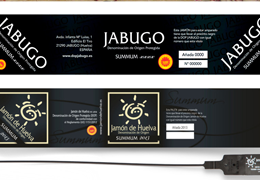 The D.O. Huelva hams become DO Jabugo
12/03/20181879 LikesOne of the great ham events on 2017 is the change of name of DO Huelva, which became DO Jabugo. This change includes...Read more
The D.O. Huelva hams become DO Jabugo
12/03/20181879 LikesOne of the great ham events on 2017 is the change of name of DO Huelva, which became DO Jabugo. This change includes...Read more The salting of Ibérico ham: the key of the salt
11/04/2018485 LikesThe salting Ibérico ham process is one the most important steps in the elaboration process. This is a delicate...Read more
The salting of Ibérico ham: the key of the salt
11/04/2018485 LikesThe salting Ibérico ham process is one the most important steps in the elaboration process. This is a delicate...Read more Sorts of Iberian Ham: we clear it up
27/01/20182047 LikesEvery Iberian ham is normally known as Jamón de Jabugo or Jamón de Pata Negra without taking into account the purity...Read more
Sorts of Iberian Ham: we clear it up
27/01/20182047 LikesEvery Iberian ham is normally known as Jamón de Jabugo or Jamón de Pata Negra without taking into account the purity...Read more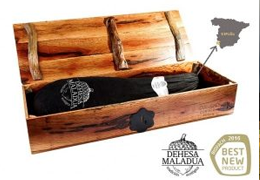 “Maladúa” the world’s most expensive ham
19/07/2016646 Likes“Maladúa” the world’s most expensive ham costs 4,100€ a leg. No doubt Spanish Brand “Dehesa Maladúa” is the world’s...Read more
“Maladúa” the world’s most expensive ham
19/07/2016646 Likes“Maladúa” the world’s most expensive ham costs 4,100€ a leg. No doubt Spanish Brand “Dehesa Maladúa” is the world’s...Read more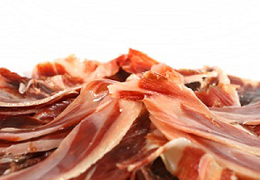 The ham benefits
24/05/20142480 LikesThe Iberian ham is one basic element in the traditional mediterranean diet, well-known for their components full of...Read more
The ham benefits
24/05/20142480 LikesThe Iberian ham is one basic element in the traditional mediterranean diet, well-known for their components full of...Read moreChat with us on WhatsApp
Call us or leave your details and we'll call you back asap
- Price
- Wines
- Cheeses
-
Jabugo (Huelva) Ham






